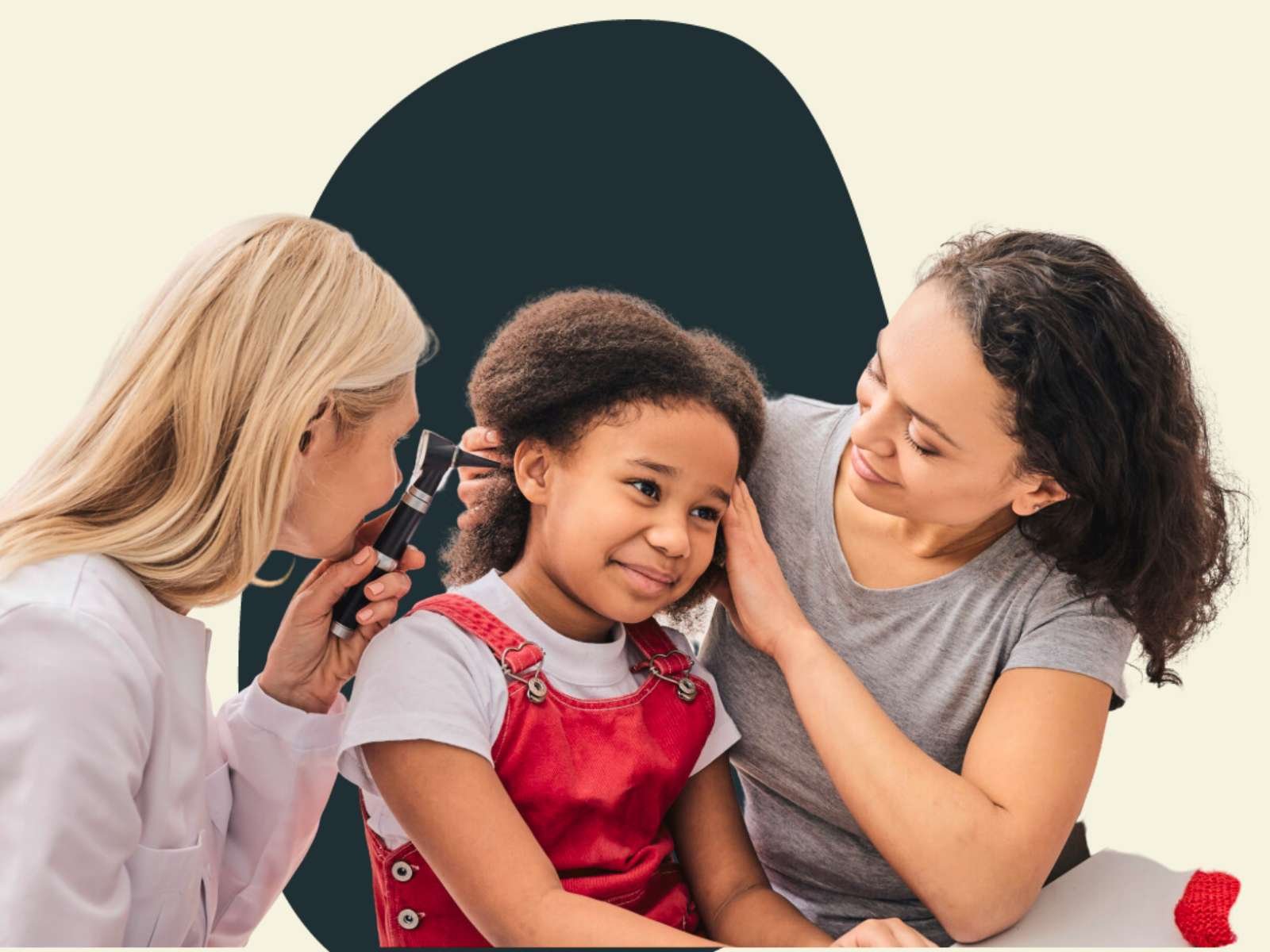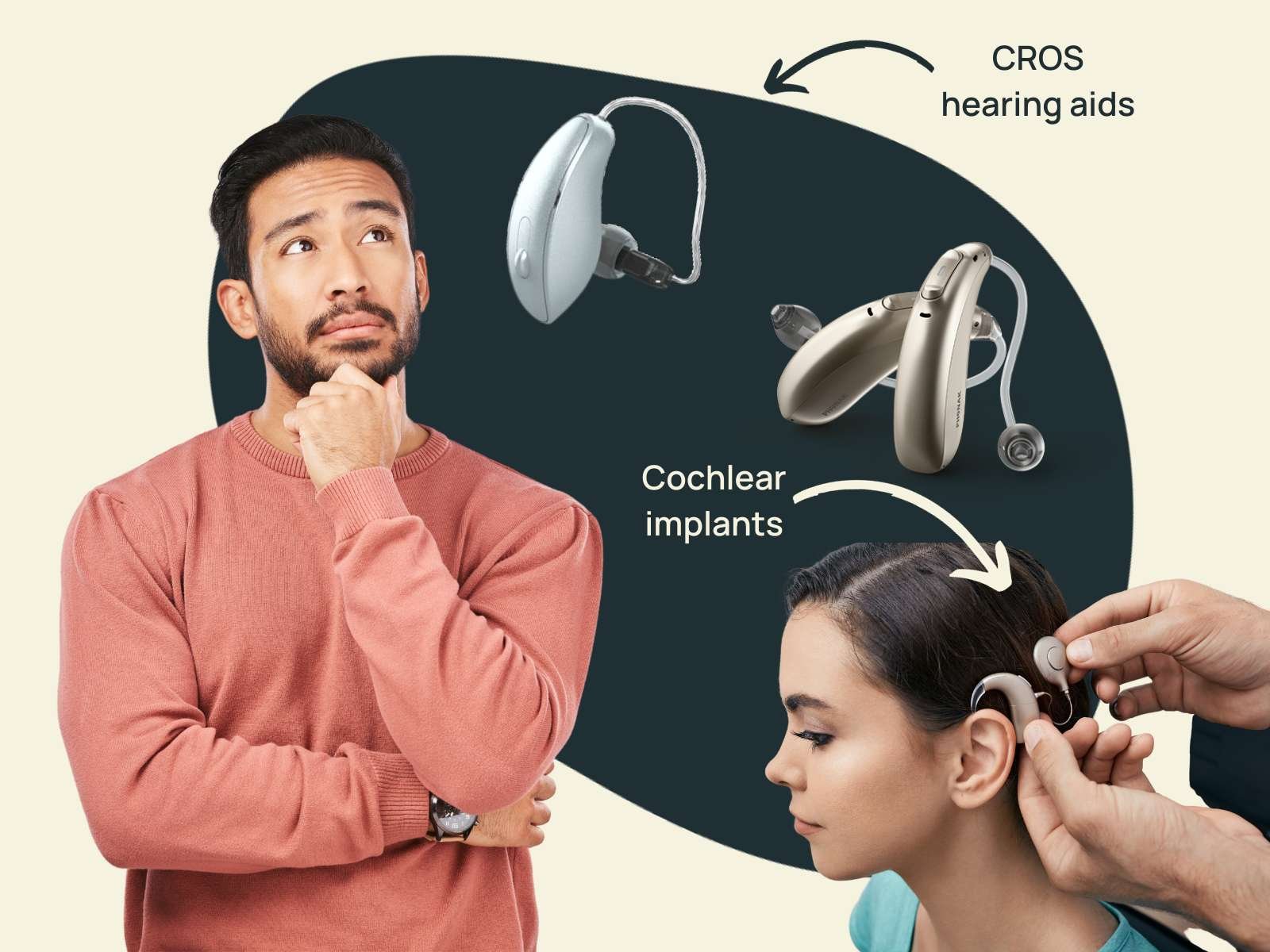As an audiologist, I have encountered various forms of hearing loss. One type that I encounter more frequently than you might expect is unilateral or single-sided hearing loss. Single-sided hearing loss, or single-sided deafness (SSD), refers to the complete or partial hearing loss in one ear.
While this condition was often overlooked in the past, we now understand the significant impact it can have on daily life and communication abilities. In this article, I will discuss what causes single-sided hearing loss, when people tend to notice it, the available treatment options, and the best communication strategies to use.
What Causes Single-Sided Hearing Loss?
Contrary to common belief, hearing loss doesn't always affect both ears. Single-sided hearing loss can be caused by various factors. In some cases, children are born with hearing loss in one ear or develop it shortly after birth due to viral or bacterial infections, such as mumps or cytomegalovirus (CMV). Others may have inherited the condition. For individuals with congenital single-sided hearing loss, the condition typically develops during fetal development or shortly after birth in the first few years of life.
However, single-sided deafness can also occur at any age. Various conditions might lead to this situation. Acoustic neuromas, benign tumors that develop on the nerves connecting the brain and the ear, are one such cause.
Sudden sensorineural hearing loss, a rapid loss of hearing—typically in one ear—can also result in single-sided hearing loss. Infection or blockage in the ear canal or a perforated eardrum can temporarily or permanently cause hearing loss. Trauma to the ear or side of the head could damage delicate inner ear structures, resulting in single-sided hearing loss.
Causes of SSD may include:
- infectious diseases (e.g., Lyme disease)
- traumatic (e.g., acoustic trauma, physical trauma)
- otologic (e.g., Meniere's disease, autoimmune ear disease)
- vascular (e.g., cardiovascular conditions)
- neoplastic (e.g., metastatic tumors)
- systemic (e.g., lupus, thyroid disease)
- viral (e.g., CMV, mumps)
- neurologic (e.g., multiple sclerosis, migraine)
- iatrogenic (e.g., ototoxic medications or surgery)
- idiopathic (unknown)
When Do People Notice Single-Sided Hearing Loss?
Surprisingly, approximately 1 in 1,000 children are born with unilateral hearing loss. While many cases are detected through newborn hearing screenings, some slip through the process or develop hearing loss later on. Unilateral hearing loss can affect people of any age—around 7% of adults in the US have this condition.
Children with single-sided deafness often don't realize they have a hearing loss because they have nothing to compare it to. They grow up accustomed to hearing in a specific way and interpret their environment through the lens of their single-sided deafness.
Parents or caretakers may not notice it initially either, as children may respond normally in quiet due to their better hearing ear. On the other hand, adults typically notice a sudden change in their hearing immediately, especially in noisy environments or when determining the direction of sounds. Adjusting to unilateral hearing loss can be disorienting and challenging.

Tests for Single-sided Deafness
If you or your child experiences a change in hearing or concerns about hearing abilities, it's crucial to take action promptly. The first step is to consult an audiologist and undergo a comprehensive hearing test. Audiologists use specialized testing methods to measure the intensity and frequency of sounds one can hear.
Children with SSD may appear to have normal hearing in quiet situations or one-on-one conversation but have difficulties in noisy backgrounds, when multiple people are talking, or when the speaker is on their "bad side." This stress can lead to behavioral issues and, if left unchecked, might contribute to academic difficulties. Hence, if your child is experiencing any hearing issues, don't hesitate to have them evaluated.
In some cases, children may pass a newborn hearing screening on one side but not the other. Returning for follow-up testing is essential to rule out any underlying conditions.
In addition, an Ear, Nose, and Throat (ENT) specialist may perform a physical examination to assess the overall health of your ear. They might also request imaging, such as an MRI or CT scan, to rule out other medical causes of hearing loss, such as a tumor, infection, or structural abnormality. By doing so, they can provide a more definitive diagnosis and appropriate treatment options.

Treatment Options for Single-Sided Hearing Loss
Many treatment options are available for single-sided hearing loss, depending on the degree of hearing loss in the poorer ear.
- Contralateral Routing of Signal (CROS) Hearing Aids: These hearing aids pick up sound from the side of the head with hearing loss and transmit it to the better-hearing ear.
Read more about the Best CROS hearing aids here.
- Bone-Anchored Hearing Aids (BAHA): A BAHA uses the body's natural ability to conduct sound through bone conduction. This device bypasses the outer and middle ear where the problem may occur, directing sound straight to the inner ear.
- Cochlear Implants: For profound hearing loss in one ear and normal hearing in the other, cochlear implants can be an option. They directly stimulate the cochlea with electrical impulses, bypassing the damaged parts of the ear to provide sound signals to the brain.
- Middle Ear Implants: These implants are surgically implanted devices. It converts sound into mechanical vibrations, directly vibrating the middle ear structures, providing a natural sound quality when the middle and inner ear anatomy is intact.
- Pharmacotherapy: In some cases, medication might be used to improve hearing, especially if the hearing loss is sudden or caused by an infection.
- Surgery: In some cases, surgery may be required to treat the underlying cause of the hearing loss.
Remember, it's essential to work with your healthcare team, including your audiologist, to determine the most effective treatment strategy for you.

Communication Strategies for Single-Sided Hearing Loss
Effective communication strategies can significantly enhance speech understanding and interaction for those with single-sided hearing loss. One way to accomplish this is by reducing background noise as much as possible, which can minimize distractions and improve focus on the speaker. Positioning the better-hearing ear towards the speaker is another helpful method to ensure maximum audibility.
Staying within five to seven feet of the speaker can also help, allowing for better pick up of sound signals. Encourage others to speak slowly and clearly, maintaining eye contact to aid in visual cues and lip reading. Feel free to ask for repetition or clarification when needed, as ensuring understanding is paramount in effective communication. These strategies can go a long way in improving the quality of communication and enhancing social interactions for individuals with single-sided hearing loss.
Conclusion
In conclusion, Single-Sided Deafness (SSD) is a condition that impacts both children and adults. Symptoms sometimes go unnoticed, particularly in children, as they adapt to their hearing norm. However, difficulties may appear in noisy environments or situations necessitating directional sound identification. Diagnostic procedures include comprehensive hearing tests, physical examinations, and imaging techniques like MRI or CT scans.
Treatment options are diverse, ranging from CROS hearing aids, BAHA, cochlear implants, middle ear implants, pharmacotherapy, to surgical interventions. Individuals with SSD are advised to adopt effective communication strategies, such as reducing background noise, positioning the better-hearing ear towards the speaker, maintaining appropriate distance, and encouraging clear and slow speech.
Seeking repetition or clarification when necessary also enhances understanding. Therefore, timely diagnosis, effective treatment, and efficient communication strategies can significantly improve communication for patients with SSD.






